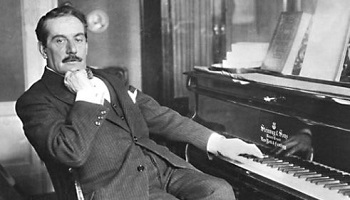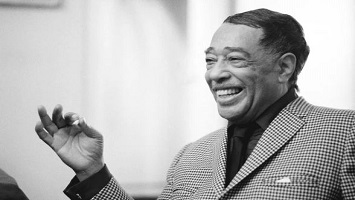
Stardust and Fortune Uncovering David Bowie’s Net Worth and the Financial Legacy of a Music Icon
David Bowie was more than just a musician—he was an innovator, a cultural chameleon, and an icon whose influence continues to shape music, fashion, and art. Known for his daring creativity and groundbreaking personas like Ziggy Stardust, Bowie constantly reinvented himself, challenging the norms of the music industry and captivating audiences worldwide. His financial success and shrewd business moves allowed him to create an estate worth hundreds of millions of dollars. But how did Bowie amass such a fortune, and what is the legacy of his financial success?
This post explores the components of Bowie’s wealth, from his transformative music career to his savvy investments, and examines how his financial legacy lives on.
David Bowie’s Net Worth: A Snapshot of Stardom and Strategy
At the time of his death in 2016, David Bowie’s net worth was estimated at around $230 million. His fortune included music royalties, album sales, real estate, and investments, making him one of the wealthiest musicians of his time. But Bowie’s financial journey was far from conventional; his wealth was as multi-layered and fascinating as his music and personas.
Bowie’s earnings were largely built on three pillars: his music catalog, live performances, and business acumen. Each played a crucial role in building his fortune, demonstrating his ability to combine artistry with smart financial decisions.
The Rise of a Music Legend: Bowie’s Early Career and Income Streams
Born David Robert Jones in 1947, Bowie’s journey to fame began in 1969 with his first major hit, “Space Oddity.” The song introduced him as an artist who wasn’t afraid to explore unconventional themes. But it wasn’t until the early 1970s, with the release of The Rise and Fall of Ziggy Stardust and the Spiders from Mars, that Bowie achieved global stardom. This album cemented his place as a rock legend and marked the beginning of his financial success.
With a knack for reinvention, Bowie consistently released albums that defied expectations and reached new audiences. Each era brought him additional fame and wealth, as albums like Aladdin Sane, Diamond Dogs, and Young Americans became hits. Bowie wasn’t just a musician—he was an entertainer, actor, and visionary, expanding his reach beyond traditional music channels and tapping into lucrative opportunities in film and television.
Bowie’s Financial Genius: The Creation of Bowie Bonds
One of the most innovative moves in Bowie’s career came in 1997 when he created “Bowie Bonds,” a financial product that allowed him to leverage his future royalties. These bonds were essentially securities backed by his music catalog, offering investors a fixed rate of return in exchange for the income generated by his songs over a ten-year period. In return, Bowie received a lump sum of $55 million upfront, allowing him to take control of his finances and avoid the need to sell his rights permanently.
Bowie Bonds were a groundbreaking concept in the music industry, paving the way for other artists to take control of their catalogs and secure upfront cash without forfeiting long-term rights. Bowie’s decision to create these bonds showcased his understanding of finance and his forward-thinking approach to managing his intellectual property. For Bowie, the bonds represented not just a financial success but also a statement about the value of artistic ownership.
Iconic Albums, Timeless Hits, and Royalty Income
Bowie’s music catalog remains one of the most valuable in rock history. Hits like “Heroes,” “Let’s Dance,” “Changes,” and “Under Pressure” have been re-recorded, streamed, and licensed in films, commercials, and video games, providing a steady stream of royalty income. Bowie’s impact on pop culture has made his music highly marketable, and as streaming platforms grew, his songs found new life with younger generations, driving up royalties further.
After his death, the rights to Bowie’s music continued to generate income, especially as his songs experienced a resurgence on streaming platforms. In 2022, his estate made headlines with the sale of his catalog to Warner Chappell Music for a reported $250 million. This landmark sale reflects both the timeless appeal of Bowie’s work and the enduring profitability of his music, which has become an evergreen asset in the digital age.
Touring: The Stage as a Source of Wealth
Live performances were another substantial part of Bowie’s income. His unique stage presence, elaborate costumes, and inventive performances drew massive crowds and generated millions in ticket sales. Unlike many artists who tour as a primary revenue source, Bowie was selective, strategically choosing when and where to tour. This exclusivity added to the allure and demand for his shows, allowing him to command high ticket prices.
In particular, the Serious Moonlight and Glass Spider tours of the 1980s were massively successful, not only showcasing his musical talents but also creating a cultural phenomenon. These tours cemented his place as a live performer, with earnings that contributed significantly to his net worth. Bowie’s tours became known for their spectacle and creativity, making them highly profitable events that further enhanced his financial position.
Strategic Real Estate Investments
In addition to his music and tours, Bowie invested in real estate, adding another layer to his wealth. He owned properties in multiple countries, including a luxurious Manhattan apartment, a villa in Mustique, and a home in Lausanne, Switzerland. These properties reflected Bowie’s taste for elegance and his understanding of real estate as a valuable investment.
Bowie’s real estate holdings were not merely residences but strategic investments that appreciated over time. After his passing, his properties added substantial value to his estate, contributing to the overall wealth he left behind. His Manhattan apartment alone was reportedly worth millions, showcasing his savvy in choosing properties with strong financial potential.
Licensing and the Bowie Brand
Bowie’s ability to license his image and music without compromising his brand was another key factor in his financial success. He was cautious about licensing, ensuring that any commercial use of his music or likeness aligned with his artistic values. His music has been featured in major films and commercials, enhancing his legacy while providing a consistent revenue stream.
Selective licensing allowed Bowie to protect the integrity of his brand. By choosing high-profile partnerships, such as his collaborations with major brands and Hollywood films, Bowie maintained an elite image, elevating the perceived value of his work. His cautious approach to licensing became an extension of his brand, adding to the uniqueness of his financial and artistic legacy.
Financial Legacy and Estate Management
After Bowie’s death, his estate was managed in accordance with his will, with half of his wealth going to his widow, Iman, and the rest split between his children. In addition to personal assets, Bowie’s estate controlled his music rights, ensuring that his family continued to benefit from his legacy. The sale of his music catalog to Warner Chappell Music in 2022 underscored the long-term value of his work and ensured that his family and legacy would continue to prosper.
Bowie’s financial legacy was built on his creativity, innovation, and business acumen. Unlike many artists who struggled to maintain control of their work, Bowie’s strategic moves allowed him to retain and monetize his catalog effectively. His estate’s management reflects his commitment to financial responsibility, ensuring that his art and wealth would benefit his loved ones and secure his influence in future generations.
The True Value of Bowie’s Legacy
David Bowie’s wealth and legacy are a testament to his impact on music, fashion, and culture. He was a pioneer who wasn’t afraid to take risks, both creatively and financially. From his transformative albums to his groundbreaking Bowie Bonds, he showed the world that artistry and business acumen could go hand in hand.
But beyond his financial wealth, Bowie’s true legacy lies in the lasting influence he has had on countless artists, musicians, and fans. His fearlessness, creativity, and relentless pursuit of originality have inspired generations to think differently, embrace individuality, and challenge societal norms. Bowie’s personas, from Ziggy Stardust to the Thin White Duke, each represented a different facet of his complex character and allowed him to leave a legacy that is as rich artistically as it is financially.
Conclusion: Stardust and Wealth – The Financial Legacy of a Visionary
David Bowie’s estimated net worth of $230 million at the time of his death reflects a life dedicated to innovation, creativity, and financial wisdom. His wealth was built on iconic albums, successful tours, real estate, and innovative financial products like Bowie Bonds, each reflecting his unique approach to the intersection of art and commerce. By retaining control of his catalog and making strategic decisions, Bowie transformed his work into an enduring financial asset that continues to benefit his family and legacy.
Bowie’s story proves that wealth isn’t just about money—it’s about the impact and influence one leaves behind. His financial success is only a part of his broader legacy, which will continue to inspire and shape the world of music, fashion, and beyond. Bowie’s wealth, like his music, is timeless, offering both financial stability for his family and an eternal source of inspiration for the world.



